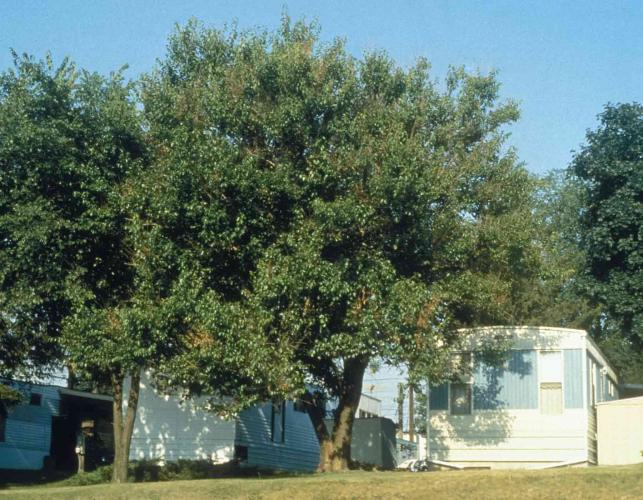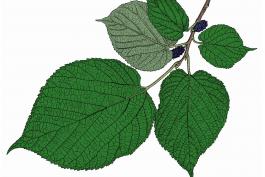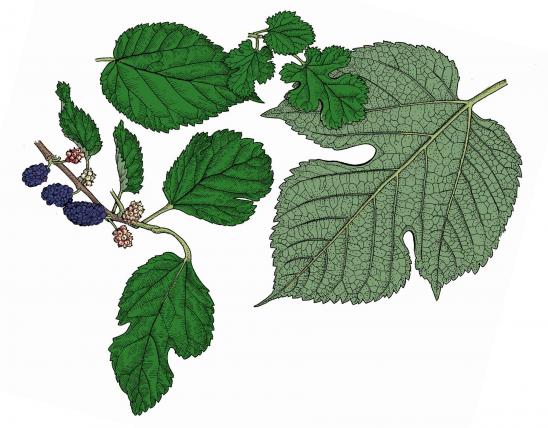
Red mulberry is a medium-sized tree with a short trunk and a broad, rounded crown.
Leaves are alternate, simple, 4–8 inches long, usually lacking lobes but some leaves with 1–3 lobes; teeth dense; tip pointed. Three main veins arise from the base. Undersurface hairy, paler than above. Bleeds milky sap. Leaf stalk hairy. Turn yellowish or lime green in the fall.
Bark is thin, dark brown to gray with an orange tint, grooves shallow, ridges narrow, tight, sometimes with loose scales.
Twigs are reddish-brown to light greenish-brown, smooth, slender, bleeding milky sap.
Flowers April–May; male and female flowers on the same tree or on different trees. Male catkins 2–3 inches long; female catkins ⅜ inch long.
Fruits June–August, blackberry-like; red at first, ripening to purplish-black, cylindrical; ¾–1¼ inches long.
Similar species: The introduced white mulberry (M. alba) has leaves smooth underneath, more often lobed, with smooth leaf stalk; its fruits are rounded or oval and start out white or pink; its catkins and leaves are smaller.
Height: to 60 feet.

Statewide.
Habitat and Conservation
Occurs in moist woods in lowland areas or on moist upland slopes. An attractive, fast-growing tree, it is sometimes planted in parks and in yards large enough to accommodate the large, spreading crown and juicy, falling fruits. Originally this was our only mulberry in Missouri. However, early settlers introduced the white or Russian mulberry and cultivated them for their edible berries and for their leaves, which were to be used as fodder for an attempted silkworm industry.
Human Connections
The juicy, edible fruits are considered by some to be obnoxiously messy, but by others to be a prized source for jams, jellies, pies, drinks, or just eating fresh. The wood has had various uses.
Ecosystem Connections
Numerous birds and mammals eat the delicious fruits. The tree provides shelter and habitat for many animals, including insects and spiders.





























